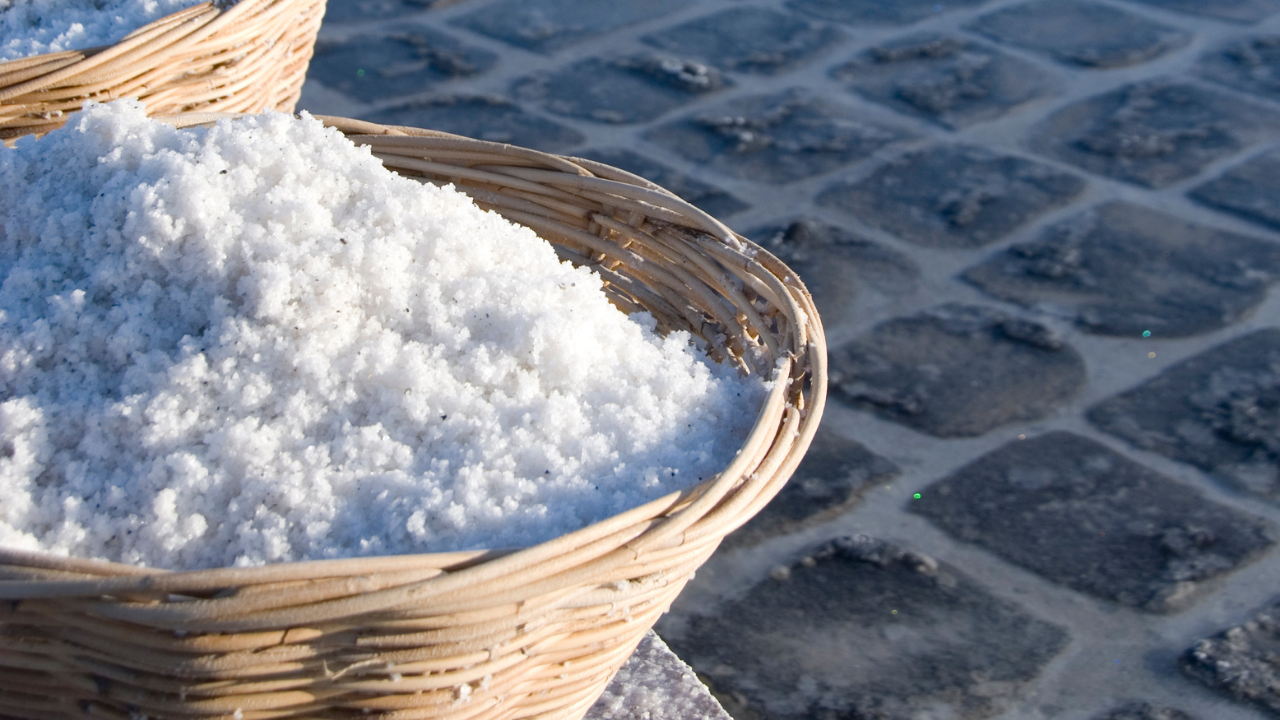Salinity
There are many different dissolved salts that contribute to the salinity of water. The major ions in seawater are: chloride, sodium, magnesium, sulfate, calcium, potassium, bicarbonate and bromine. Many of these ions are also present in freshwater sources, but in much smaller amounts. The ionic compositions of inland water sources are dependent on the surrounding environment. Most lakes and rivers have alkali and alkaline earth metal salts, with calcium, magnesium, sodium, carbonates and chlorides making up a high percentage of the ionic composition. Freshwater usually has a higher bicarbonate ratio while seawater has greater sodium and chloride concentrations.
Under laboratory conditions, pure water contains only oxygen and hydrogen atoms, but in the real world, many substances are often dissolved in water, like salt. Salinity is the concentration of salt in water, usually measured in parts per thousand (ppt). The salinity of seawater in the open ocean is remarkably constant at about 35 ppt. Salinity in an estuary varies according to one’s location in the estuary, the daily tides, and the volume of fresh water flowing into the estuary.
In estuaries, salinity levels are generally highest near the mouth of a river where the ocean water enters, and lowest upstream where freshwater flows in. Actual salinities vary throughout the tidal cycle, however. Salinity levels in estuaries typically decline in the spring when snowmelt and rain increase the freshwater flow from streams and groundwater. Salinity levels usually rise during the summer when higher temperatures increase levels of evaporation in the estuary.
Estuarine organisms have different tolerances and responses to salinity changes. Many bottom-dwelling animals, like oysters and crabs, can tolerate some change in salinity, but salinities outside an acceptable range will negatively affect their growth and reproduction, and ultimately, their survival.
Salinity impacts various physical and chemical properties of water, such as density and ability to support aquatic life. Salinity also affects chemical conditions within the estuary, particularly levels of dissolved oxygen in the water. Salinity affects the amount of oxygen that can dissolve in water, or solubility, which decreases as salinity increases. In other words, the greater the salinity, the lower the dissolved oxygen saturation point. The solubility of oxygen in seawater is about 20 percent less than it is in fresh water at the same temperature.
Monitoring Salinity
Salinity is measured using a Handheld Refractometer. Refractometers measure how much light bends, or refracts, when it enters the liquid. This is called the refractive index. The more salts (and other material) dissolved in the water, the more resistance the light will meet and the more it will bend. This is because light travels at different velocities depending on the medium. The salinity of freshwater is less than 0.5 parts per thousand (ppt), while the salinity of saltwater is about 35 ppt. For a cheaper, but somewhat less accurate, method, try a hydrometer. Refractometers are used to measure substances dissolved in water, using the principle of light refraction through liquids. The more dissolved solids in water, the slower light travels through it. Refractometers measure the change in the direction of light as it passes from air into water. Salinity and temperature both affect the index. Refractometers use a scale to quantify the effect that dissolved solids in water have on light. Using a refractometer is simple, they work with ambient light, and no batteries are required. Such instruments cost from $150 to $350.

Factors Affecting Salinity
Evaporation of water and formation of ice both increase the salinity of the ocean. However these “salinity raising” factors are continually counterbalanced by processes that decrease salinity such as the continuous input of fresh water from rivers, precipitation of rain and snow, and melting of ice.
